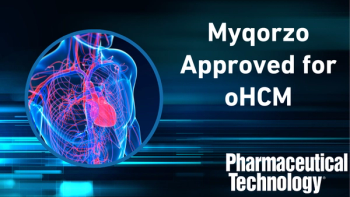
Pharmaceutical Technology Europe
- Pharmaceutical Technology Europe-02-01-2006
- Volume 18
- Issue 2
Industry News
The European Science Foundation (ESF) has published the conclusions of its 2-year Forward Look Study on Nanomedicine. Defined as a billionth of a metre, a nanometer is 1000 times smaller than the width of a human hair. Nanomedicine uses nanoscale technology to diagnose and treat disease. The scope of the study included defining the field of nanomedicine, reviewing what has been achieved so far, determining Europe's strengths and weaknesses, and drawing up plans to ensure continued growth.
Nanomedicine needs macro investment
Europe must continue funding to maintain progress
The European Science Foundation (ESF) has published the conclusions of its 2-year Forward Look Study on Nanomedicine. Defined as a billionth of a metre, a nanometer is 1000 times smaller than the width of a human hair. Nanomedicine uses nanoscale technology to diagnose and treat disease. The scope of the study included defining the field of nanomedicine, reviewing what has been achieved so far, determining Europe's strengths and weaknesses, and drawing up plans to ensure continued growth.
The field is growing rapidly and is already bringing benefits in imaging diagnostics and nanomedicines. An area of specific interest is polymer-based delivery systems for cancer chemotherapeutic agents.
Europe is already strong in many areas, but must be sure that the funding that has produced results so far is continued. The ESF recommends a strategic focus on major disease areas, interdisciplinary education, industrial–academic collaborational support, and transparency with the media, public and politicians. The meeting was chaired by Professor Ruth Duncan, head of the Centre for Polymer Therapeutics at the Welsh School of Pharmacy.
Older antibiotics not effective
A meta-analysis of data conducted at the University of Rochester Medical Centre (NY, USA) has further undermined the effectiveness of older antibiotics. The decreasing capabilities of older antibiotics is a worry for the pharmaceutical industry as a whole — with diminishing efficacy comes diminishing use and ultimately diminishing profits.
The study evaluated data from 11426 children in the US and Europe who showed symptoms of streptococcal throat infection. Evidence presented to the annual Interscience Conference on Antimicrobial Agents and Chemotherapy (ICAAC) in Washington DC (USA) showed that a short course of new drugs such as cefpodoxime was more effective than a standard 10-day course of amoxicillin or penicillin.
The results came from 47 trials across Europe and the US. Comparisons of 10 days of cephalosporin compared with 10 days of penicillin treatment made up 35 trials with the rest being comparisons of 4–5 days of cephalosporin versus 10 days of penicillin treatment. The higher bacterial cure rate of cephalosporins is only one aspect of their possible advantage. Compliance is generally better with short courses of medication so although the initial cost of penicillin or amoxicillin may be lower, the cost of the high rates of failure must be taken into consideration.
Configuring the LIMS market
Mergers and acquisitions are part of everyday life for laboratory information systems (LIMS) vendors. Such moves allow companies to add value to their goods and increase the scope of their products in terms of functionality.
By consolidating existing products vendors can reap the rewards of improved data management and streamlined systems. Before this can be achieved, however, there are problems to overcome. The acquiring or parent company will have a portfolio of products developed by different vendors and must produce a standardized technology platform to ease end-user understanding of the technicalities and reduce training costs.
The move towards off-the-shelf configurable devices as opposed to customized solutions is driven by both consolidation and customer demand. The high levels of regulation surrounding the pharmaceutical industry mean that configurable systems can add value by 'future proofing' at the same time as integrating with legacy systems.
Agilent launches new LC series
Agilent has launched the successor to its 1100LC. The 1200 Series is reverse compatible with the 1100, allowing new and existing modules to integrate without the need for changes in method, training or revalidation. The 1100 emulation mode allows non-Agilent software to be supported until third-party upgrades are available.
More than 60 instrument modules add flexibility to the system and allow configuration for all major LC applications. The Rapid Resolution System can provide analysis up to 20 times faster and 60% higher resolution than conventional LC. Up to 2000 per system per day are executable without compromising data quality or method flexibility. A range of LC columns from 0.075–50 mm internal diameter and 15–300 mm in length are available.
The 'Push for help' button integrates problem detection and recording, and sends the data directly to Agilent customer support over a secure connection. The system is available in all configurations.
Articles in this issue
almost 20 years ago
A review and critique of multifilter arrangementsalmost 20 years ago
Talking Point: Corporate procurementalmost 20 years ago
Spotlight: The emerging but complex Mexican marketalmost 20 years ago
Effect of raw materials on the formulation of norfloxacin tabletsalmost 20 years ago
Regulatory Report: Using computer baselinesalmost 20 years ago
Seeing through the profitalmost 20 years ago
Newsalmost 20 years ago
Regulatory Newsalmost 20 years ago
Making tissue culture commercially viablealmost 20 years ago
Can blow-fil-seal help deliver success?Newsletter
Get the essential updates shaping the future of pharma manufacturing and compliance—subscribe today to Pharmaceutical Technology and never miss a breakthrough.




